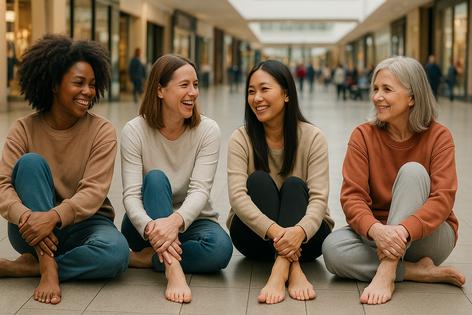Comfy Clothes at Home Define Fashion in 2025
Published in Fashion Daily News
In 2025, fashion is as much about comfort as it is about appearance. After years of blurred lines between work and home, the trend toward relaxed, versatile clothing shows no sign of slowing. What began as a pandemic necessity has matured into a lifestyle choice: people want garments that feel good, look stylish and adapt seamlessly from lounging on the couch to stepping outside for errands.
The New Uniform of Daily Life
The idea of “house clothes” once carried a stigma, suggesting sloppiness or lack of effort. Today, it signals intentional comfort. Cozy loungewear sets, oversized cardigans and soft pants dominate wardrobes, with fabrics chosen for softness and breathability. Pieces are designed to withstand hours of wear without losing shape, while still presentable enough to answer the door or join a video call.
Fabrics That Hug and Breathe
Fabric innovation has been central to this shift. Cotton blends with a hint of stretch, bamboo knits and fleece alternatives offer warmth without bulk. Many brands emphasize textures that invite touch—waffle knits, ribbed cottons and brushed jersey—bringing luxury to everyday wear. Breathability is key, especially as homes double as workspaces where temperature comfort matters.
Colors and Moods
Color palettes lean toward soothing tones: oatmeal, sage, dusty rose and deep navy. These hues promote relaxation while maintaining a sense of polish. Still, vibrant accents are creeping back in—sunny yellows, teal greens and bold stripes—infusing energy into garments otherwise defined by calm minimalism. For many, mixing a pop of color with neutral loungewear offers balance between playfulness and serenity.
Function and Flexibility
The best home wear now serves multiple purposes. Wide-leg drawstring pants and oversized tunics are equally suited to meditation sessions and neighborhood strolls. Wrap sweaters double as makeshift blankets. Jumpsuits designed with stretch and hidden zippers allow comfort without sacrificing silhouette. The emphasis is on pieces that can transition seamlessly from couch to café.
Footwear—or the Lack Thereof
At home, shoes are increasingly optional. Many households encourage bare feet for relaxation, health or cultural reasons. Where footwear is needed, minimalist slippers with cushioned soles or sock-like shoes dominate. The focus remains on freeing the foot while protecting against cold floors, rather than structured shoes designed for long commutes.
Design Meets Wellness
Comfortable clothes in 2025 are also tied to wellness. Yoga-inspired pieces, breathable wraps and garments that accommodate gentle stretching or relaxation rituals speak to a lifestyle where fashion supports mental and physical balance. Brands promote loungewear as part of self-care, merging aesthetics with health-conscious living.
Sustainability Matters
Eco-friendly practices define this space as well. Consumers increasingly demand natural fibers, recycled fabrics and ethical sourcing even for house clothes. Sustainability once reserved for formal fashion now permeates daily wear, as people recognize the cumulative impact of garments worn most often. Vintage and secondhand pieces are also popular, proving that comfort and conscience can coexist.
A Culture of Confidence
What’s most notable is how cultural perceptions have shifted. Comfy clothes are no longer hidden; they are proudly showcased on social media and in advertising campaigns. Influencers embrace the lived-in look, celebrating the beauty of softness, looseness and ease. The message is clear: self-expression can thrive without rigid tailoring or discomfort.
The Road Ahead
Looking forward, experts expect comfy home fashion to remain strong. As technology enables more hybrid living, clothes that flex between home and outside life will stay central. Whether through fabrics that regulate temperature, modular garments that layer easily, or inclusive sizing that prioritizes real bodies, the trend is not a temporary detour but a long-term cultural shift.
In 2025, comfort is not the enemy of fashion. It is fashion.
========
This article was created, in part, utilizing AI tools







Comments